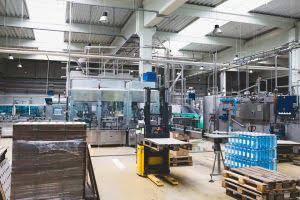
The computation of the overhead cost per unit for all of the products is shown in Figure 6.4. A predetermined overhead rate, also known as a plant-wide overhead rate, is a calculation used to determine how much of the total manufacturing overhead cost will be attributed to each unit of product manufactured. The rate is determined by dividing income summary the fixed overhead cost by the estimated number of direct labor hours. The predetermined overhead rate was found by dividing the estimated manufacturing overhead cost by the estimated total units in the allocation base, so the predetermined overhead cost per unit is $9.00. The predetermined overhead rate is calculated by dividing the estimated manufacturing overhead by the estimated activity base (direct labor hours, direct labor dollars, or machine hours).

What are some examples of overhead costs?

The best way to predict your overhead costs is to track these costs on a monthly basis. Conversely, the cost of the t-shirts themselves would not be considered overhead because it’s directly linked to your product (and obviously changes based on the volume of products you create and sell). Fixed costs are those that remain the same even when production or sales volume changes.
Limitations of the POHR formula
- In these situations, a direct cost (labor) has been replaced by an overhead cost (e.g., depreciation on equipment).
- Another way to view it is overhead costs are those production costs that are not categorized as direct materials or direct labor.
- Dinosaur Vinyl uses the expenses from the prior two years to estimate the overhead for the upcoming year to be $250,000, as shown in Figure 4.17.
- The example shown above is known as the single predetermined overhead rate or plant-wide overhead rate.
- For information pertaining to the registration status of 11 Financial, please contact the state securities regulators for those states in which 11 Financial maintains a registration filing.
In order to find the overhead rate we will use the same basis that we have chosen by multiplying this basis by the calculated rate. For example, if we choose the labor hours to be the basis then we will multiply the rate by the direct labor hours in each task during the manufacturing process. As the production head wants to calculate the predetermined overhead rate, all the direct costs will be ignored, whether direct cost (labor or material). A predetermined overhead rate is an allocation rate given for indirect manufacturing costs that are involved in the production of a product (or several products).
- With $2.00 of overhead per direct hour, the Solo product is estimated to have $700,000 of overhead applied.
- Using the Solo product as an example, 150,000 units are sold at a price of $20 per unit resulting in sales of $3,000,000.
- The overhead used in the allocation is an estimate due to the timing considerations already discussed.
- Company B wants a predetermined rate for a new product that it will be launching soon.
Ask Any Financial Question
For instance, if the activity base is machine hours, you calculate predetermined overhead rate by dividing the overhead costs by the estimated number of machine hours. This is calculated at the start compute predetermined overhead rate of the accounting period and applied to production to facilitate determining a standard cost for a product. If an actual rate is computed monthly or quarterly, seasonal factors in overhead costs or in the activity base can produce fluctuations in the overhead rate.
Which activity is most important to you during retirement?
- Common activity bases used in the calculation include direct labor costs, direct labor hours, or machine hours.
- See the top eBay selling tools available today to help ecommerce companies more effectively scale or run their business on eBay.
- For businesses in manufacturing, establishing and monitoring an overhead rate can help keep expenses proportional to production volumes and sales.
- When there is a big difference between the actual and estimated overheads, unexpected expenses will definitely be incurred.
- Not a whole lot compared to other business models (which is probably why a lot of people choose to start these sorts of businesses!).
- The allocation of overhead to the cost of the product is also recognized in a systematic and rational manner.
- Again, that means this business will incur $8 of overhead costs for every hour of activity.
When there is a big difference between the actual and estimated overheads, unexpected expenses will definitely be incurred. Also, profits will be affected when sales and production decisions are based on an inaccurate overhead rate. Suppose that X limited produces a product X and uses labor hours to assign the manufacturing overhead cost. The estimated manufacturing overhead was $155,000, and the estimated labor hours involved were 1,200 hours.


Recent Comments